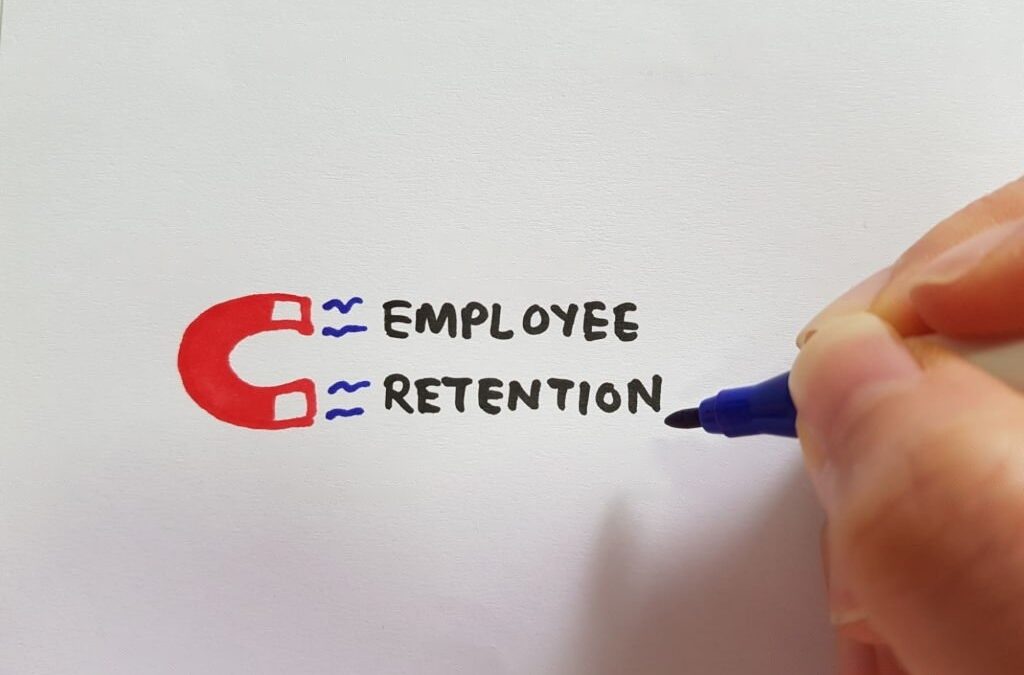Candidate ExpectationsAs we step into the new year, it’s important for businesses to prepare for the upcoming hiring trends in 2023. With the job market becoming increasingly competitive, companies need to offer more than just a salary and benefits package to attract top talent.
Candidates are now looking for an overall experience, from the moment they apply to the day they leave the company. This means businesses need to focus on creating a positive candidate experience, which includes everything from clear and concise job postings to personalized communication and a smooth onboarding process.
In this article, we’ll explore the top hiring trends for 2023 and provide practical tips on how to meet candidate expectations and attract the best talent to your organization. So, buckle up and get ready to learn how to stay ahead of the curve in the ever-changing world of recruitment.
Remote Work and Flexible Work Arrangements
The COVID-19 pandemic accelerated the shift towards remote work and flexible work arrangements. Many companies have realized that remote work is not only possible but can also be more productive than traditional office-based work.
In 2023, companies will need to continue to embrace remote work and offer flexible work arrangements to attract top talent. This means businesses need to provide the necessary technology and tools for remote work, such as video conferencing software and project management tools.
They also need to ensure that remote workers feel connected to the company culture and have access to the same opportunities for growth and development as office-based employees.
Another trend that is emerging is the use of co-working spaces. Co-working spaces offer a hybrid work environment where employees can work remotely but also have access to a physical office space if needed. This allows companies to provide the flexibility that employees crave, while also maintaining some level of control over their work environment. Companies can also use co-working spaces to create a sense of community and provide networking opportunities for their employees.
Overall, remote work and flexible work arrangements are here to stay. Companies that embrace these trends and provide the necessary support and infrastructure will have a competitive advantage in attracting top talent.
Emphasis on Employee Well-Being
In 2023, companies will need to place a greater emphasis on employee well-being. This includes physical and mental health, as well as work-life balance. The pandemic has highlighted the importance of employee well-being, and companies that prioritize this will be more attractive to candidates.
One way to support employee well-being is to provide wellness programs. These can include fitness classes, meditation sessions, and mental health resources.
Companies can also offer flexible work arrangements and paid time off to allow employees to recharge and take care of their personal needs.
Another trend that is emerging is the use of technology to support employee well-being. For example, companies can use wearable devices to monitor employee health and provide personalized recommendations for improving well-being.
They can also use chatbots and virtual assistants to provide mental health support and resources.
Ultimately, companies that prioritize employee well-being will not only attract top talent but also retain their employees for the long term.
Importance of Diversity, Equity, and Inclusion
In 2023, companies will need to prioritize diversity, equity, and inclusion (DEI) in their hiring processes. This means creating a culture that values and respects diversity, and actively seeking out a diverse pool of candidates.
One way to improve DEI is to use blind screening techniques. This involves removing identifying information from resumes and applications to eliminate any unconscious bias in the hiring process.
Companies can also use diversity recruiting platforms to source candidates from underrepresented groups.
In addition to hiring diverse candidates, companies also need to create an inclusive work environment.
This means providing equal opportunities for growth and development, regardless of race, gender, or background. Companies can also provide diversity training for employees and create employee resource groups to support underrepresented groups.
Ultimately, companies that prioritize DEI will have a more engaged and motivated workforce, as well as a stronger brand reputation.
Focus on Skills-Based Hiring
In 2023, companies will shift their focus towards skills-based hiring. This means hiring candidates based on their skills and potential, rather than their educational background or previous job titles.
One way to implement skills-based hiring is to use skills assessments in the hiring process. These can be used to evaluate a candidate’s abilities in specific areas, such as coding or project management.
Companies can also use gamified assessments to make the process more engaging and fun for candidates.
Another trend that is emerging is the use of apprenticeships and internships. These programs allow companies to train and develop candidates with potential, rather than relying solely on external hiring.
This can be a cost-effective way to build a pipeline of talent and ensure a strong talent pool for the future.
Ultimately, companies that focus on skills-based hiring will have a more diverse and talented workforce, as well as a competitive advantage in a rapidly changing job market.
Use of Artificial Intelligence in Hiring Processes
In 2023, companies will increasingly use artificial intelligence (AI) in their hiring processes. This includes using AI-powered tools to screen resumes, conduct automated interviews, and analyze Candidate Expectations data.
One benefit of using AI in hiring is that it can eliminate unconscious bias in the process. AI-powered tools can be programmed to ignore demographic information and focus solely on skills and qualifications. This can help to create a more diverse and inclusive workforce.
However, companies need to be mindful of the potential for bias in AI algorithms. It’s important to test and validate AI tools to ensure they are fair and accurate. Companies should also provide transparency and communicate with candidates about the use of AI in the hiring process.
Ultimately, companies that use AI in their hiring processes will have a more efficient and effective recruitment process, as well as a competitive advantage in identifying and hiring top talent.
Employer Branding and Reputation Management
In 2023, companies will need to focus on employer branding and reputation management to attract top talent. This means creating a strong brand image that appeals to candidates and aligns with their values.
One way to improve employer branding is to create a compelling careers page on the company website.
This should include information about the company culture, values, and benefits, as well as job postings that are clear and concise. Companies can also use social media and other digital channels to showcase their brand and culture.
Another trend that is emerging is the use of employee advocacy programs. These programs encourage current employees to share positive experiences and promote the company brand on social media and other channels.
This can be a powerful way to attract candidates who are looking for an authentic and engaging employer brand.
Ultimately, companies that prioritize employer branding and reputation management will have a stronger brand identity and be more attractive to top talent.
Leveraging Social Media for Recruitment
In 2023, companies will continue to leverage social media for recruitment. Social media platforms such as LinkedIn, Twitter, and Facebook can be powerful tools for sourcing candidates and promoting job postings.
One way to use social media for recruitment is to create targeted ads that reach a specific audience. Companies can also use social media to showcase their employer brand and culture through photos, videos, and other engaging content.
Another trend that is emerging is the use of social media for Candidate Expectations screening. Companies can use social media to get a better sense of a candidate’s personality and interests, as well as to verify their qualifications and experience. However, it’s important to be mindful of potential bias and to use social media screening in a fair and consistent manner.
Ultimately, companies that leverage social media for recruitment will have a wider reach and be more effective in identifying and attracting top talent.
Candidate Expectations/Experiance and Personalization
In 2023, companies will need to focus on providing a positive candidate experience and personalization throughout the hiring process. This means providing clear and timely communication, as well as tailoring the experience to the individual candidate’s needs and preferences.
One way to improve the candidate experience is to use chatbots and virtual assistants to provide personalized support and guidance. Companies can also use video interviews and other digital tools to make the process more engaging and convenient for candidates.
Another trend that is emerging is the use of predictive analytics to personalize the hiring process. This involves analyzing data from previous candidates to identify patterns and preferences, and using this information to tailor the hiring process for future candidates.
Ultimately, companies that prioritize the candidate experience and personalization will have a more engaged and motivated workforce, as well as a stronger brand reputation.
Training and Development Programs for Employee Retention
In 2023, companies will need to focus on training and development programs to retain top talent. This means providing opportunities for growth and development, as well as support for career advancement.
One way to improve employee retention is to provide mentorship programs. These programs pair employees with experienced mentors who can provide guidance and support for career development.
Companies can also provide training and development opportunities, such as certification programs and leadership training.
Another trend that is emerging is the use of continuous feedback and performance management. This involves providing regular feedback and coaching to employees, as well as setting clear goals and Candidate Expectations.
Companies can also use technology to automate performance management and provide real-time feedback.
Ultimately, companies that prioritize training and development programs for employee retention will have a more engaged and motivated workforce, as well as a competitive advantage in attracting and retaining top talent.
Conclusion and Call to Action
In conclusion, 2023 will bring a number of hiring trends that companies need to be aware of in order to attract top talent. From remote work and flexible work arrangements to skills-based hiring and AI-powered recruitment tools, companies need to stay ahead of the curve to remain competitive in a rapidly changing job market.
By focusing on employee well-being, diversity, equity, and inclusion, and creating a positive candidate experience, companies can not only attract top talent but also retain their employees for the long term. And by prioritizing training and development programs, companies can ensure a strong talent pipeline for the future.
So, now that you’re armed with these practical tips, it’s time to take action and prepare for the hiring trends of 2023. By staying ahead of the curve, you can attract and retain the best talent and build a strong and successful organization for years to come.




